Boiling Point: This California desert oasis has lessons for climate change
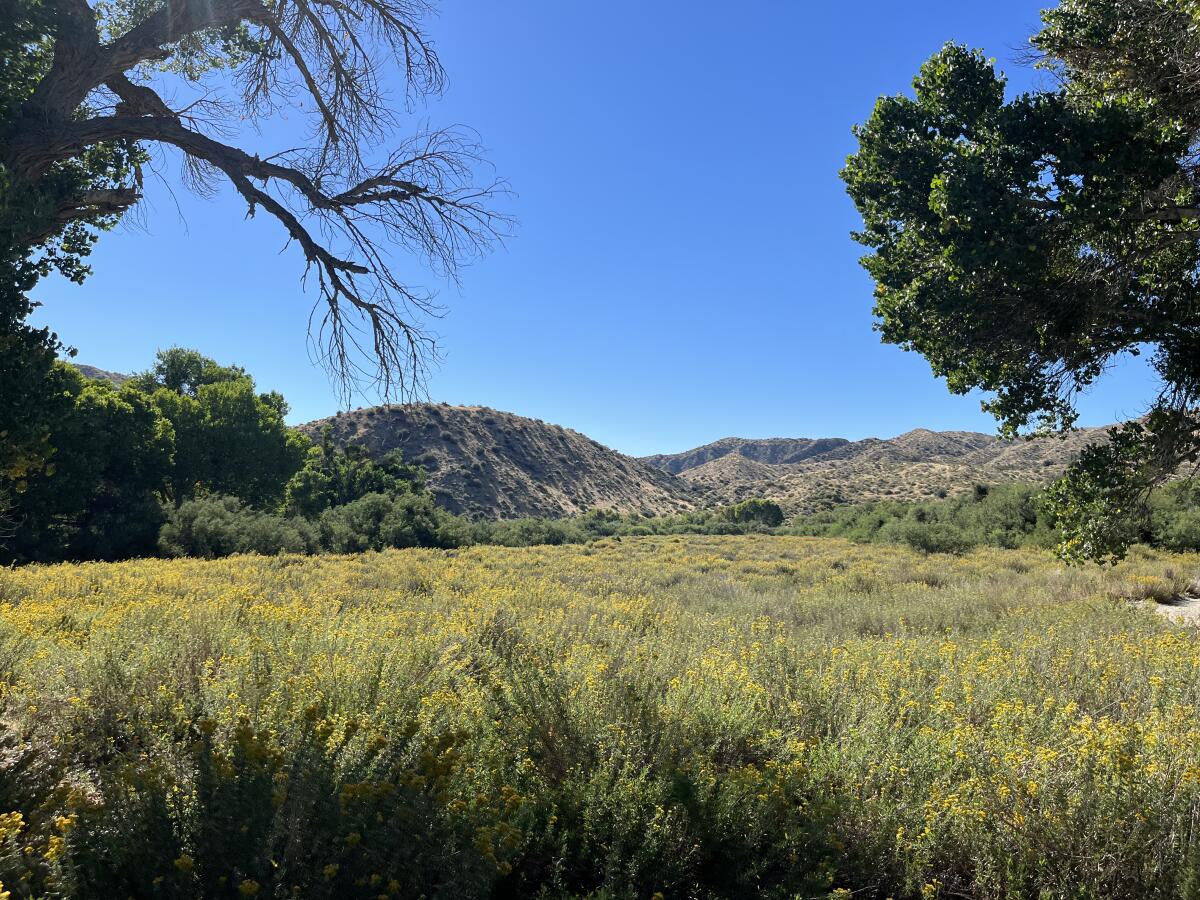
- Share via
Big Morongo Canyon Preserve is so green right now it’s hard to believe it’s in the middle of the desert.
I recently spent a few hours hiking through the oasis, just off Highway 62 and not far from the 10 Freeway in California’s high desert, about two hours east of Los Angeles near Palm Springs. It’s a gorgeous spot, full of blooming flowers and sun-dappled mountains and scurrying lizards. It’s especially vibrant right now because of this summer’s intense rains.
“Typically it would be browner,” said Kevin Wong, executive director of Big Morongo Canyon Preserve, the nonprofit that manages the space. “But right after Tropical Storm Hilary, everything turned green again. We all just jumped up and down.”
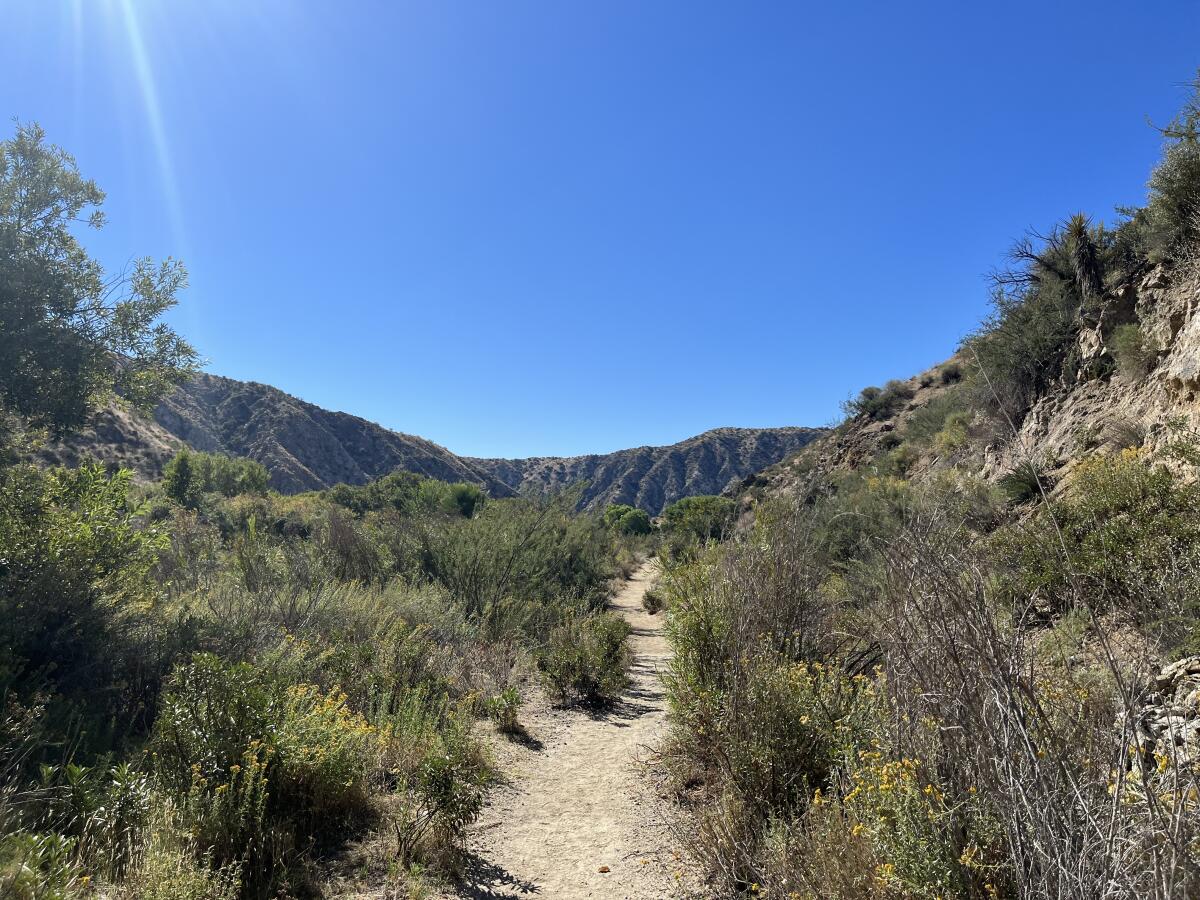
It had been nine years since I’d last visited Big Morongo, on one of my first assignments as the energy reporter at the Desert Sun newspaper. It was 2014, and state and federal officials were releasing a draft plan to guide renewable energy development in the desert — which places should be open to solar and wind farms, and which places should be protected. President Obama’s Interior secretary, Sally Jewell, was in town for the announcement. She started her visit with a hike through the preserve.
“There are areas that are perfect to develop and areas that are too ripe to develop,” Jewell told me at the time.
You're reading Boiling Point
Sammy Roth gets you up to speed on climate change, energy and the environment. Sign up to get it in your inbox twice a week.
You may occasionally receive promotional content from the Los Angeles Times.
Nearly a decade later, the tension between clean energy and conservation — which was mostly limited to California at the time — has rippled out across the American West, threatening to derail the rapid phaseout of planet-warming fossil fuels. It’s a tension that President Biden and Interior Secretary Deb Haaland are attempting to navigate as they push for large amounts of renewable energy on public lands, while also embracing the “30 by 30” campaign to protect 30% of America’s lands and waters by 2030.
Big Morongo is a great example of the value of conservation.

The 31,000-acre preserve provides habitat for dozens of species of lizards, snakes, bats and butterflies, as well as iconic bighorn sheep and desert tortoises. Hundreds of bird species have been spotted there, enjoying a landscape of cacti, yucca and fan palms. The area is especially biodiverse because it straddles the transition zone between the Mojave and Sonoran deserts.
When Wong arrived at the preserve Friday, he told me, two deer were hanging out in front of his office.
“I just got to sit there and enjoy the deer in the parking lot,” he said. “I relish every day being surrounded by nature.”
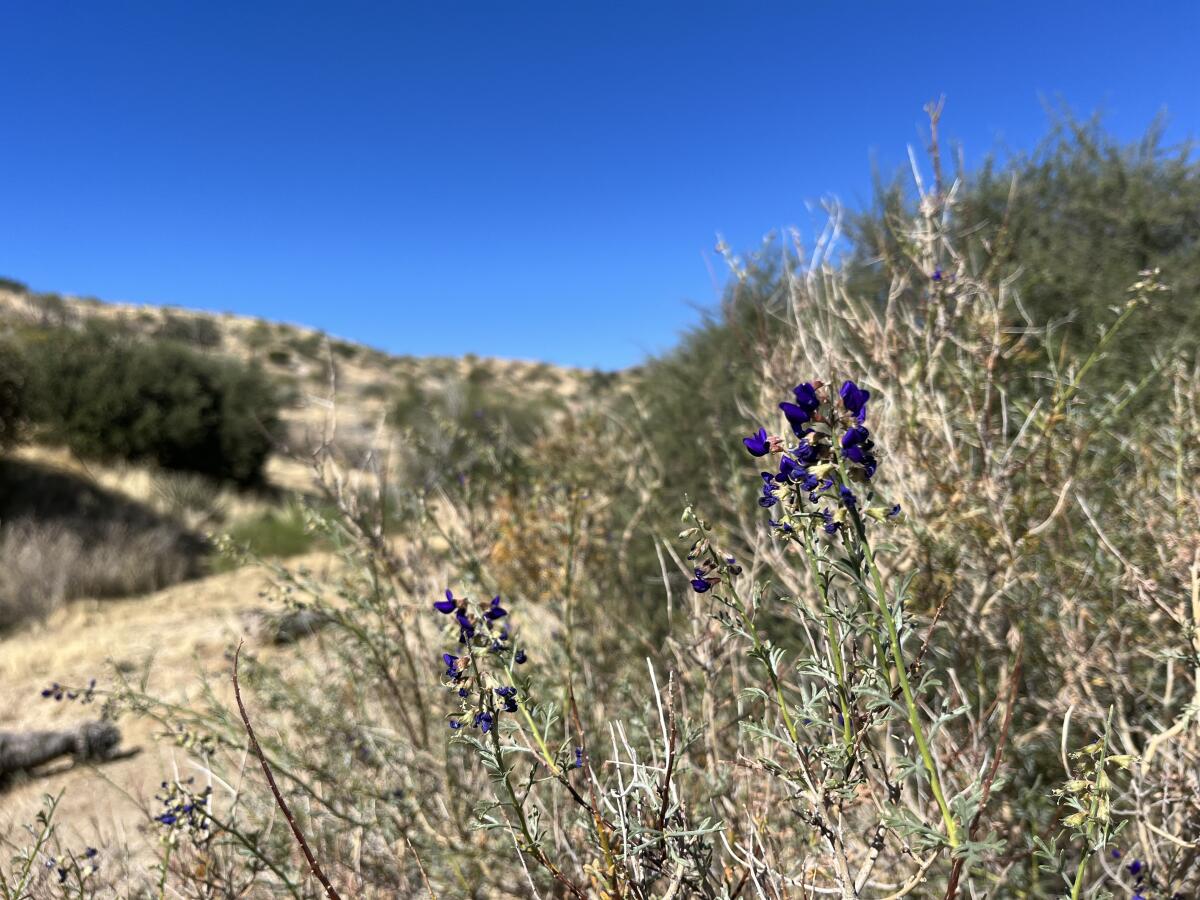
What I didn’t know during my first visit to Big Morongo — and didn’t learn until recently — is that the L.A. Department of Water and Power once hoped to build a major electric line through the preserve, to bring energy from faraway wind and solar farms to Los Angeles. The city dropped that plan more than a decade ago amid fierce opposition from environmentalists.
Today, there’s no chance of L.A. or anyone else trying to use Big Morongo for renewable energy purposes. The preserve is now part of Sand to Snow National Monument, which was established by Obama in 2016 at the urging of conservation groups.
But that doesn’t mean Big Morongo is untouched by energy infrastructure; I hiked past a sign warning of an underground gas pipeline, operated by Southern California Gas Co. I’ve seen similar signs along many Southern California hiking trails.
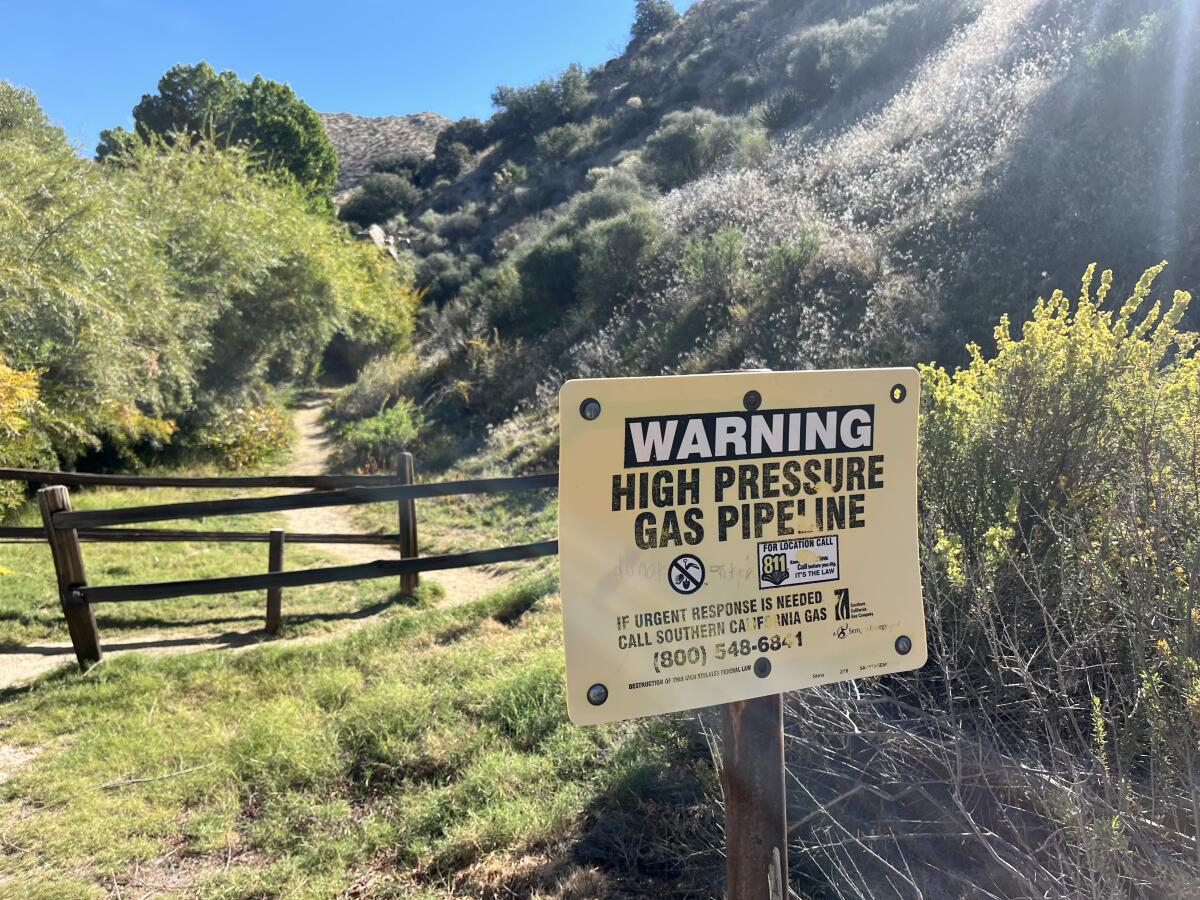
The gas running through those pipes fuels a climate crisis from which Big Morongo certainly isn’t immune.
Wong told me long-term drought — worsened by global warming — has largely dried up surface-level streams that once flowed through the preserve much more regularly. Drought has harmed the preserve’s cottonwood trees too. And Tropical Storm Hilary — the kind of extreme weather made more likely by rising temperatures — damaged some of Big Morongo’s hiking trails, forcing Wong to shut them down for the foreseeable future.
Even on trails where volunteers have cleared trees felled by the storm, the piles of wood pose a wildfire hazard.
“That’s a fuel load waiting to explode,” Wong said. “We have to get a chunk of that wood out of there.”

Many homes in high desert communities near the preserve — including Morongo Valley, Yucca Valley and Joshua Tree — have installed rooftop solar panels. But as I’ve written previously, there will never be enough rooftop solar power to solve the climate crisis on its own. We need to find places to put sprawling solar farms, towering wind turbines and long-distance electric lines.
The presence of a gas pipeline at Big Morongo doesn’t mean we should have allowed an electric line through the preserve. But we’ve gotten used to fossil fuel infrastructure, even in our most precious spaces. We need to get used to the clean stuff too.
Otherwise, many of the birds and butterflies and wildflowers that call Big Morongo home will be in big trouble.
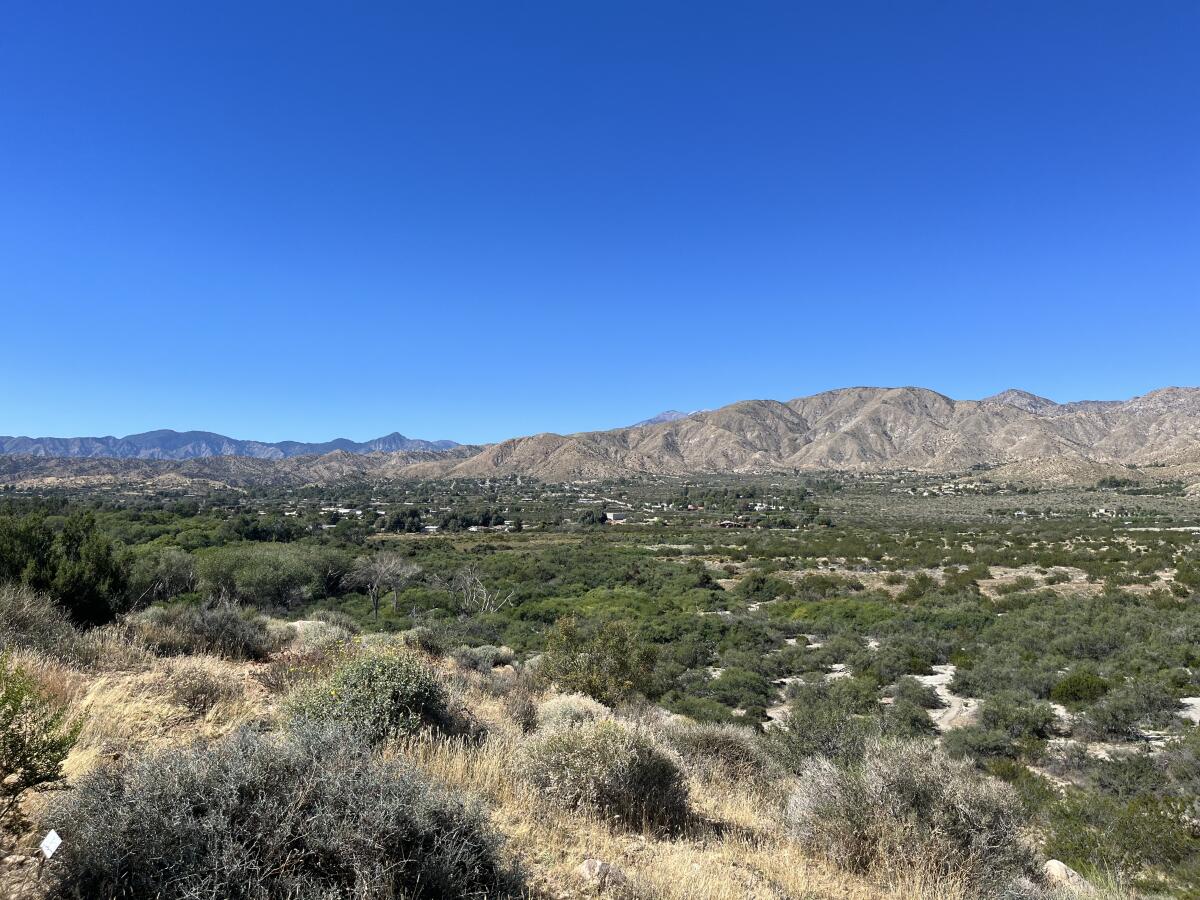
On that note, here’s what’s happening around the West:
TOP STORIES
In good news for the Colorado River, federal officials say a wet winter and decent water conservation over the last year should be enough to prevent Lake Mead and Lake Powell from crashing — for now. But California and the six other states that rely on the river will still need to agree on big water cuts by 2027, my colleague Ian James reports. In other Colorado River news, the Desert Sun’s Janet Wilson has a fabulous story exploring how J.B. Hamby — a 27-year-old member of the Imperial Irrigation District’s board of directors — has become one of the most powerful players in Western water politics. For historical context, see this piece I wrote about Hamby when he first ran for office in 2020.
The San Joaquin Valley “has reached an inflection point. Hot, dry, flooded and sinking, the region must once again evolve if it is to survive.” So writes The Times’ Hayley Smith, in a thoughtful story about the need to move beyond traditional farming in California’s agricultural heartland, as global warming worsens the swings between drought and flood and groundwater supplies continue to dry up. There was some positive news at the southern end of the San Joaquin, with the opening of an underground water bank that will store water from wet years for drier ones. The main beneficiary will be Southern California cities such as Los Angeles, whose representatives paid for the new facility, Ian James writes.
Newly elected speaker of the House Mike Johnson is a climate denier who got more money from oil and gas companies than any other industry last year. Details here from the New York Times’ Lisa Friedman. Johnson’s ascension to one of the most powerful positions in the U.S. government came as the United Nations warned in a new report that humanity is edging closer to catastrophic climate tipping points having to do with extreme heat, extinctions, melting glaciers and more, Hayley Smith reports. It also came as California Gov. Gavin Newsom signed a bunch of climate-related agreements in China — and as new data showed that the Golden State’s greenhouse gas pollution rose slightly last year, per the Sacramento Bee’s Ari Plachta.
POLITICAL CLIMATE
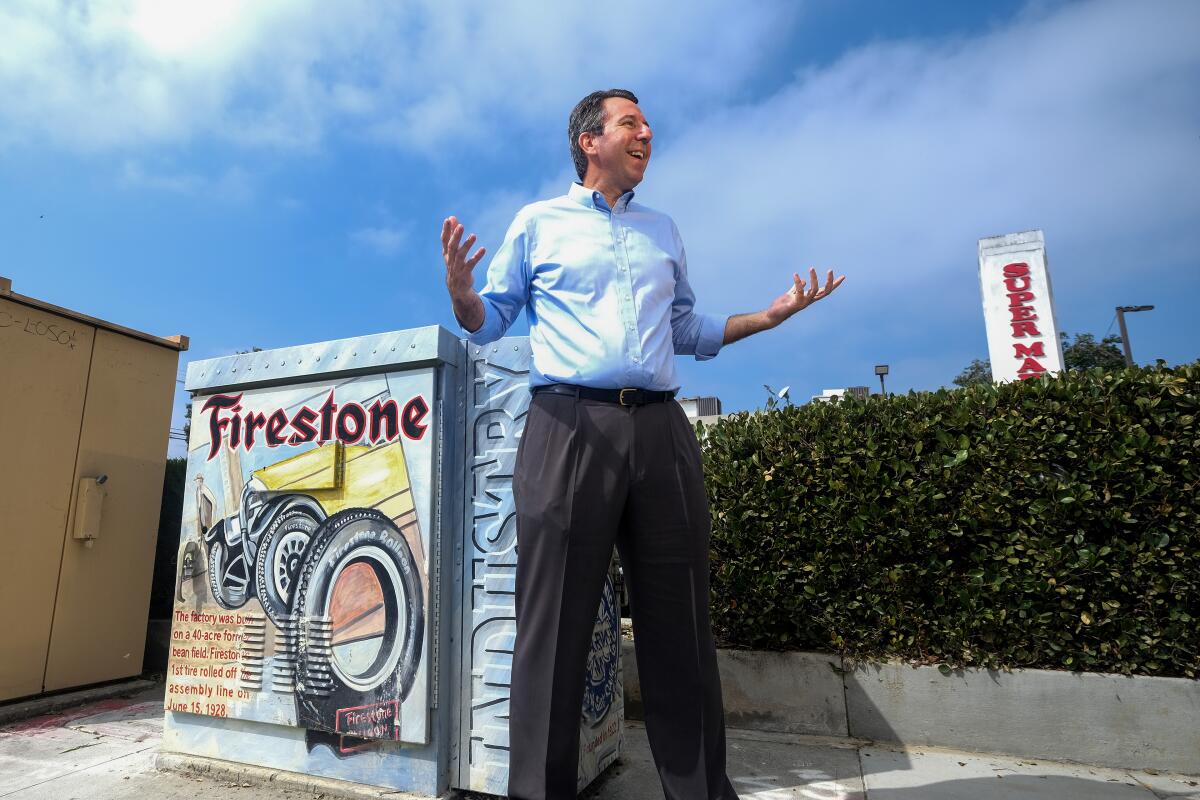
“If anyone can persuade me and my fellow fossil fuel reprobates to give up our gas-powered lawnmowers, luminous bumpers and fleets of carburetor-powered cars, it’s him.” So writes Times columnist Gustavo Arelleno in a thoughtful story about Hector De La Torre, a Southeast L.A. County politician and son of Mexican immigrants who serves on the California Air Resources Board, a top climate regulator. “When people say to me about how hard it is to charge cars or this or that, I tell them it’s been less than a hundred years that we have the convenience of gas stations,” De La Torre said. “We’re just making another transition to another technology, and it’s going to be a little inconvenient in the beginning. But eventually, it will be the norm.”
In last Thursday’s Boiling Point, I noted that L.A. Mayor Karen Bass had revoked her support for a proposal to study the removal of the 90 Freeway — which runs just three miles — and its replacement with affordable housing and a public park. After initially calling the 90 a “freeway to nowhere,” Bass said she had “heard loud and clear from communities who would be impacted and I do not support a study.” My colleague Erika D. Smith sees the mayor’s abrupt change of heart as a reminder that giving communities too much say over what gets built in their backyards can prove toxic for important housing and climate projects, writing in her column that “not all development projects that are worthwhile or necessary will be popular.”
Will the Biden administration’s proposal to block oil and gas drilling on 1.6 million acres of public lands in Wyoming harm “more people than the Civil War, Pearl Harbor and 9/11 combined”? Believe it or not, that’s what one Republican lawmaker in the state said, as reported by the New York Times’ Lisa Friedman. And in case you were wondering whether Exxon Mobil’s recent announcement that it would purchase an industry rival for roughly $60 billion was some kind of outlier, now Chevron has agreed to purchase another fossil fuel driller, Hess, for $53 billion in stock. The fossil fuel industry is doubling down on fossil fuels.
THE ENERGY TRANSITION
California’s Shasta County is launching a $100,000 media campaign to stir up opposition to a proposed 48-turbine wind farm, which was rejected by the county but whose developer is now seeking approval from state officials instead. Details here from Damon Arthur at the Redding Record Searchlight. In Idaho, meanwhile, Republican U.S. Sen. Jim Risch introduced a bill that would block the state’s largest wind farm — which I wrote about last month — by prohibiting the federal government from approving renewable energy projects that are opposed by state legislatures, Steve Kiggins reports for the Billings Gazette.
Can a coalition of nonprofits, researchers and companies persuade a town in California’s San Joaquin Valley to let them inject a bunch of carbon underground? The coalition’s leaders think they can — and if they don’t get enough public support, they promise they’ll look elsewhere, Jean Chemnick writes for E&E News. It’s a fascinating story about the role of carbon capture in the clean energy transition — and the tension that carbon capture can create. For another example of that tension, look to the Navajo Nation, where Kevin Robinson-Avila has a great story for the Albuquerque Journal on the Navajo Nation’s push to rescue a New Mexico coal plant with carbon capture, and on the broader debate over carbon capture and storage.
Maine residents will vote next Tuesday on replacing the state’s two major for-profit electric utilities with a public power agency. Here’s the story from Canary Media’s Julian Spector. I realize this isn’t Western news, but I imagine there are public power advocates across the U.S. — including in California — watching this vote with high hopes. As I’ve written previously, many activists believe taking electricity out of the hands of for-profit companies such as Southern California Edison and Pacific Gas & Electric is crucial to ensuring a future of cleaner energy, affordable bills and reliable power. (Those companies disagree.)
AROUND THE WEST

“Biking brings you back to nature. It gets you in tune with, you know, what Los Angeles might have been like years ago when it was slower.” So said one of the many Los Angeles-area residents who took to the 110 Freeway this weekend, biking and walking a six-mile stretch of the American West’s first freeway while it was closed to cars for several hours — a powerful example of how we might reimagine our cities for a climate-safe future. My colleague Ben Poston talked with cyclists about what it was like to have the 110 largely to themselves. And Times photographers Allen J. Schaben and Dania Maxwell took lots of pictures.
The company behind Arrowhead bottled water is suing California in hopes of maintaining its access to water flowing down the San Bernardino Mountains. BlueTriton Brands is challenging a ruling by state officials that ordered the company to stop taking much of its historical supply, arguing that officials overstepped their authority “far beyond what California law allows,” The Times’ Ian James reports. Water disputes have become so common in the West — and so complicated — that Utah now has a special program to train its judges to work on them, Bloomberg’s Zahra Hirji reports. In other Western water news, Circle of Blue’s Brett Walton explored how wildfires have increasingly threatened water supplies, focusing on Las Vegas, New Mexico.
“When a plant or species disappears for good in these modern times, it leaves behind a warning to our own species.” So writes The Times’ Michael Hiltzik in a column focused on the importance of the Endangered Species Act, and the 21 species that have just been formally declared extinct. In better wildlife news, my colleague Jeanette Marantos reports that the last two years have been pretty good for monarch butterflies, probably thanks in part to the native milkweed that many people have planted in their yards. The Washington Post’s Dino Grandoni, meanwhile, has a fascinating journey into an Idaho cave where scientists are testing a vaccine to protect bats from white-nose syndrome.
ONE MORE THING

Climate change is coming for Halloween.
Data released last week by research group Climate Central show that October nights have warmed by 2.2 degrees Fahrenheit on average across the U.S. since 1970. Pumpkin farmers are feeling the burn, with the Associated Press’ Melina Walling and Brittany Peterson reporting on the damage that worsening heat and less-reliable water supplies are doing to pumpkin crops.
There’s no aspect of our lives untouched by the climate crisis — and that’s spooky. It’s also a reminder of why we must act.
Happy Halloween.
We’ll be back in your inbox Thursday. To view this newsletter in your web browser, click here. And for more climate and environment news, follow @Sammy_Roth on Twitter.
Toward a more sustainable California
Get Boiling Point, our newsletter exploring climate change, energy and the environment, and become part of the conversation — and the solution.
You may occasionally receive promotional content from the Los Angeles Times.






